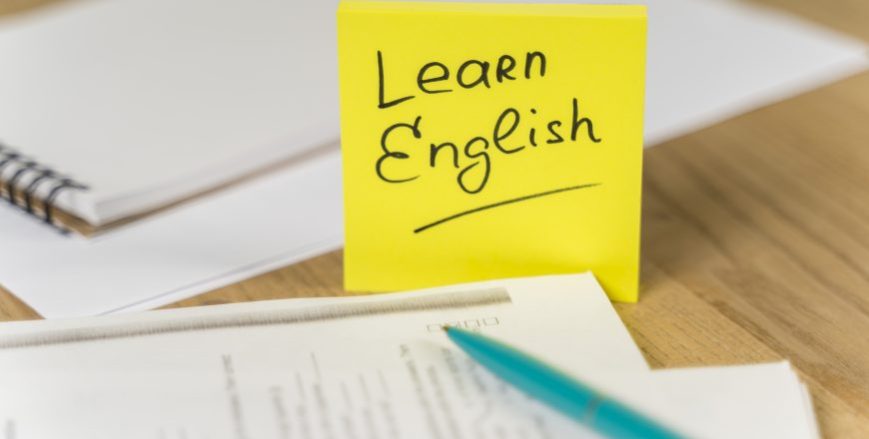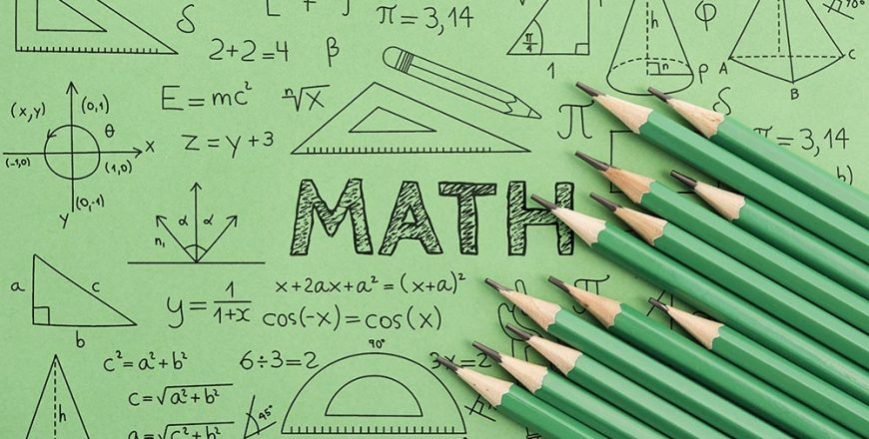PHYSICS GRADE 11

- Physical World
- Units and Measurements
- Motion in a Straight Line
- Motion in a Plane
- Work, Energy and Power
- Laws of Motion
- System of Particles and Rotational Motion
- Gravitation
- Mechanical Properties of Solids
- Mechanical Properties of Fluids
- Thermal Properties of Matter
- Thermodynamics
- Kinetic Theory
- Oscillations
- Waves
Physical World
1
What is Physics? Part 1
3
Scope and Excitement of Physics
4
1.3 – Physics Technology and Society
6
Different Fundamental Forces – Part 1
7
Different Fundamental Forces – Part 2
8
Nature of Physical Laws – Part 1
9
Nature of Physical Laws – Part 2
10
Symmetry and Isotropy
11
Understanding Physical World with Help of Mind Map
Units and Measurements - Part 1
1
Introduction
2
Fundamental and Derived Units
3
Table 2.1
4
Table 2.1 Continued…
5
Table 2.2
6
Measurement of Length and Parallax Method
7
Parallax Method Described and Examples Solved
8
Solved Problems and Estimaton of Very Small Distances
Motion in a Straight Line
1
Motion in a Straight Line Introduction
2
Kinematics
3
Postion, Path Length and Displacement
4
Average Velocity
5
Average Speed
6
Instantaneous Speed
7
Position Time Graph of Instantaneous Speed
8
Variation of Velocity with Time
9
Instantaneous speed vs Instanteneous Acceleration
10
Acceleration as a Function of Time
11
Velocity – Time Graph for Some Simple Cases; Kinematic Equations for Uniformly Accelerated Motion
12
Kinematic Equation for Rectilinear Motion with Constant Acceleration ; Example 3.3
13
Example 3.4
14
Example 3.5
15
Example 3.6, 3.7, 3.8
16
Relative Velocity
17
Example 3.9
18
Mind Map
Units and Measurements - Part 2
1
Exercise 2.5 Range of Lengths
2
Measurement of Lengths
3
Measurement of Time
4
Types of Errors
5
Least Count Error
6
Relative Error, Example 2.6
7
Combination of Errors
8
Example 2.8 ; Error of A Product or A Quotient
9
Example 2.10 ; Error in Case of Measured Quantity Raised to a Power
10
Example 2.1 and 2.7
11
Significant Figures
12
Significant Figures and Rounding Off Digits
13
Rules for Determining Uncertainties in Arithmetic Calculations; Dimensions of Physical Quantities
14
Dimensions of Physical Quantities Continued…
15
Deducing Relation among the Physical Quantities
16
Exercises [1(a,b,c,d)]
17
Exercises [2(a,b), 3]
18
Exercises (6,7,8)
19
Exercises (9,10,11,12)
20
Exercises (13,14,15,16)
21
Mind Map
Motion in a Plane
1
Introduction
2
Scalars and Vectors
3
Equality of Vectors
4
Vector Addition
5
Parallelogram Method
6
Resolution of Vectors – Part 1
7
Resolution of Vectors – Part 2
8
Analytical Method
9
Example 4.2
10
Example 4.3
11
Position Vector and Displacement
12
Expressing Vector in a Component Form; Acceleration
13
Example 4.4
14
Example 4.5, 4.6
15
Projectile Motion
16
Equation of Path of a Projectile Motion
17
Maximum height of Projectile; Example 4.7
18
Example 4.8, 4.9
19
Neglecting Air Resistance ; Uniform Circular Motion – Part 1
20
Uniform Circular Motion – Part 2
21
Centripetal Acceleration; Example 4.10
22
Mind Map
Work Energy and Power
1
Introduction
2
Work Done by a Variable Force
3
Conservative Forces and Non – Conservative Forces
4
Power and Energy ; Kinetic Energy
5
Kinetic Energy
6
Work Energy Theorem
7
Relation Between F and K, Potential Energy
8
Potential Energy Stored in a Spring – Part 1
9
Potential Energy Stored in a Spring – Part 2
10
Mechanical Energy and Conservation
11
Collision
12
Elastic Collision in One Direction
13
Perfectly Inelastic Collision in one Direction
14
Perfectly Elastic Collision in 2 Dimension
15
Numericals – Part 1
16
Numericals – Part 2
Laws of Motion - Part 1
1
Introduction
2
Aristotle’s Fallacy
3
Law of Inertia (Continued…)
4
Newton’s First Law of Motion; Exercise 5.1
5
Newton’s Second Law of Motion (Part 1)
6
Newton’s Second Law of Motion (Part 2)
7
Some Points About Second Law of Motion
8
Impulse; Example 5.3, 5.4; Newton’s Third Law of Motion
9
Mind Map
Laws of Motion - Part 2
1
Example 5.5
2
Conservation of Momentum
3
Equilibrium of Particles
4
Example 5.6
5
Common forces in Mechanics
6
Friction – Part 1
7
Friction – Part 2
8
Example (5.7 & 5.8)
9
Example 5.9
10
Rolling Friction
11
Circular motion – Part 1
12
Circular motion – Part 2
13
Example 5.11
14
Example 5.12 – Part 1
15
Example 5.12 – Part 2
System of Particles and Rotational Motion
1
Introduction
2
Motion of Rigid body
3
Identical Transitional Trajectory (Motion of Rigid Body)
4
Centre of Mass – Part 1
5
Centre of Mass – Part 2 ; Example 7.1
6
Example 7.2 & Example 7.3
7
Motion of Centre of Mass – Part 1
8
Motion of Centre of Mass – Part 2
9
Motion of Centre of Mass – Part 3
10
Linear Momentum of System of Particles
11
Newton’s Second Law Extended to System of Particles
12
Vector Product of Two Vectors- Part 1
13
Vector Product of Two Vectors- Part 2
14
Angular Velocity
15
Relation of Angular Velocity with Linear Velocity
16
Angular Acceleration
17
Angular Momentum of a Particle
18
Angular Momentum for a System of Particles ;Law of Conservation of Angular Momentum
19
Example 7.5 ; Example 7.6
20
Equilibrium of Rigid Bodies- Part 1
21
Equilibrium of Rigid Bodies- Part 2
22
Partial Equilibrium – Part 1
23
Partial Equilibrium – Part 2 ; Example 7.7
24
Principle of Moments
25
Centre of Gravity
26
Numericals – Part 1
27
Numericals – Part 2
28
Moment of Inertia- Part 1
29
Moment of Inertia- Part 2 ; Radius of Gyration
30
Theorems of Perpendicular and Parallel Axes ; Example 7.11 ; Example 7.12
31
Kinematics of Rotational Motion about a Fixed Axis
32
Example 7.13 ; Example 7.14
33
Dynamics of Rotational Motion about a Fixed Axis
34
Work Done by Torque- Part 1
35
Work Done by Torque- Part 2 ; Example 7.15
36
Angular Momentum in case of Rotation about a Fixed Axis – Part 1
37
Angular Momentum in case of Rotation about a Fixed Axis – Part 2 ;Conservation of Angular Momentum
38
Rolling Motion
39
Kinetic theory of Rolling Motion; Example 7.16
40
Mind Map
Gravitation
1
Introduction
2
Kepler’s Laws
3
Example 8.1
4
Universal Law of Gravitation – Part 1
5
Universal Law of Gravitation – Part 2
6
Example 8.2(a,b)
7
The Gravitational Constant
8
Acceleration due to Gravity of Earth
9
Acceleration due to Gravity Below and Above the Surface of Earth
10
Gravitational Potential Energy
11
Example 8.3; Escape Speed
12
Example 8.4
13
Earth Satellites; Example 8.5
14
Example 8.6; Example 8.7; Energy of an Orbiting Satellite
15
Example 8.8; Geostationary and Polar Satellites
16
Weightlessness; Mind Map
Mechanical Properties of Solids
1
Mechanical Properties of Solids – Part 1
2
Mechanical Properties of Solids – Part 2
3
Stress and Strain
4
Types of Stress and Strain; Hooke’s Law
5
Types of modulus of elasticity;Potential Energy Stored in a String
6
Hooke’s Law;Stress – Strain Curve
7
Numericals (3,4)
8
Numericals (6,7,8)
Mechanical Properties of Fluids
1
Introduction
2
Pressure; Variation in Pressure with Height
3
Variation of Pressure with Depth
4
Atmospheric Pressure and Gauge Pressure; Hydraulic Lift
5
Hydraulic Lift; Streamline Flow – Part 1
6
Streamline Flow – Part 2; Equation of Continuity; Expression for Critical Velocity
7
Difference Between Streamline Flow and Turbulent Flow; Types of Energy
8
Bernoulli’s Theorem
9
Limitations of Bernoulli’s Theorem;Venturi Meter;Torricelli’s Law
10
Applications of Bernoulli’s Theorem
11
Viscosity; Coefficient of Viscosity
12
Poiseuille’s Formula
13
Terminal Velocity; Numericals
14
Types of Intermolecular Forces; Intermolecular Binding Energy; Molecular Theory of Surface Tension – Part 1
15
Molecular Theory of Surface Tension-Part 2; Surface Energy
16
Angle of Contact; Applications of Surface Tension;Expression for Capillary Rise
17
Numericals
Thermal Properties of Matter
1
Introduction
2
Thermometry- Part 1
3
Thermometry- Part 2;Numericals
4
Ideal Gas Equation
5
Thermal Expansion
6
Linear Expansion
7
Problems on Linear Expansion
8
Volume Expansion
9
Coefficient of Volume Expansion; Numericals
10
Area Expansion
11
Applications of Thermal Expansion- Part 1
12
Applications of Thermal Expansion- Part 2
13
Specific Heat Capacity- Part 1
14
Specific Heat Capacity- Part 2; Calorimetry
15
Numericals on Specific Heat Capacity & Calorimetry – Part 1
16
Numericals on Specific Heat Capacity & Calorimetry – Part 2
17
Numericals on Specific Heat Capacity & Calorimetry – Part 3
18
Numericals on Specific Heat Capacity & Calorimetry – Part 4
19
Numericals on Specific Heat Capacity & Calorimetry – Part 5
20
Numericals on Specific Heat Capacity & Calorimetry – Part 6
21
Numericals on Specific Heat Capacity & Calorimetry – Part 7
22
Change of State-Part 1
23
Change of State-Part 2
24
Change of State-Part 3
25
Latent Heat
26
Latent Heat of Melting
27
Numericals on Latent Heat – Part 1
28
Numericals on Latent Heat – Part 2
29
Numericals on Latent Heat – Part 3
30
Numericals on Latent Heat – Part 4
31
Numericals on Latent Heat – Part 5
32
Heat Transfer
33
Variable State & Steady State
34
Conduction – Part 1
35
Conduction – Part 2
36
Heat Current; Convection Heat Transfer
37
Radiation Heat Transfer
38
Numericals on Conduction Heat Transfer
39
Derivation of Junction Temperature & Equivalent Thermal Conductivity
40
Newton’s Law of Cooling
41
Numericals on Newton’s Law of Cooling;Verification of Newton’s Law of Cooling
Thermodynamics - Part 1
1
Introduction
2
Overview on Thermodynamics
3
Types of Systems – Part 1
4
Types of Systems – Part 2
5
Examples of Different Types of Systems – Part 1
6
Examples of Different Types of Systems – Part 2
7
Problem Solving
8
Thermal Equilibrium
9
Zeroth Law of Thermodynamics
10
Internal Energy, Heat & Work
11
First Law of Thermodynamics
12
Mayer’s Relation
13
Thermodynamic State Variables & Equation of States
14
Work done in Isothermal Process; Adiabatic Process
15
Work done in Adiabatic Process
16
Second Law of Thermodynamics
Thermodynamics - Part 2
1
Heat Engine
2
Refrigerator
3
Reversible and Irreversible Process
4
Carnot’s Engine
5
Work Done for an Adiabatic Process; Thermodynamic Process – Part 1
6
Thermodynamic Process – Part 2
7
Carnot’s Efficiency
Kinetic Theory
1
Introduction
2
Boyle’s Law; Charles’s Law
3
Avogadro’s Hypothesis; Ideal Gas Equation
4
Kinetic Theory of Ideal Gases – Part 1
5
Kinetic Theory of Ideal Gases – Part 2
6
Specific Heat of Gases; Law of Equipartition of Energy
7
Mean Free Path
8
Degrees of Freedom for Different Kinds of Gases
9
Exercise Problems
10
Kinetic Gas Equation – Part 1
Oscillations
1
Introduction
2
Periodic Motion; Oscillatory Motion
3
Period and Frequency
4
Simple Harmonic Motion and Circular Motion
5
General Form of SHM; Simple Systems Exhibiting SHM
6
Numericals; Time Period of Simple Pendulum
7
Numericals; Damped SHM – Part 1
8
Damped SHM – Part 2
9
Numericals
10
Energy in SHM
11
Exercise Problems – Part 1
12
Exercise Problems – Part 2
13
Illustrative Examples on Simple Harmonic Motion
14
General Equation for SHM
15
Exercise Problems – Part 3
Waves
1
Introduction
2
Types of Waves
3
General Form of a Wave
4
Phase, Amplitude & Wavelength of Wave
5
Period & Frequency of a Wave
6
Speed of a Transverse Wave for a String; Principle of Superposition of Waves – Part 1
7
Principle of Superposition of Waves – Part 2
8
Reflection of Waves
9
Standing Waves & Normal Modes – Part 1
10
Standing Waves & Normal Modes – Part 2
11
Beats
Be the first to add a review.
Please, login to leave a review






